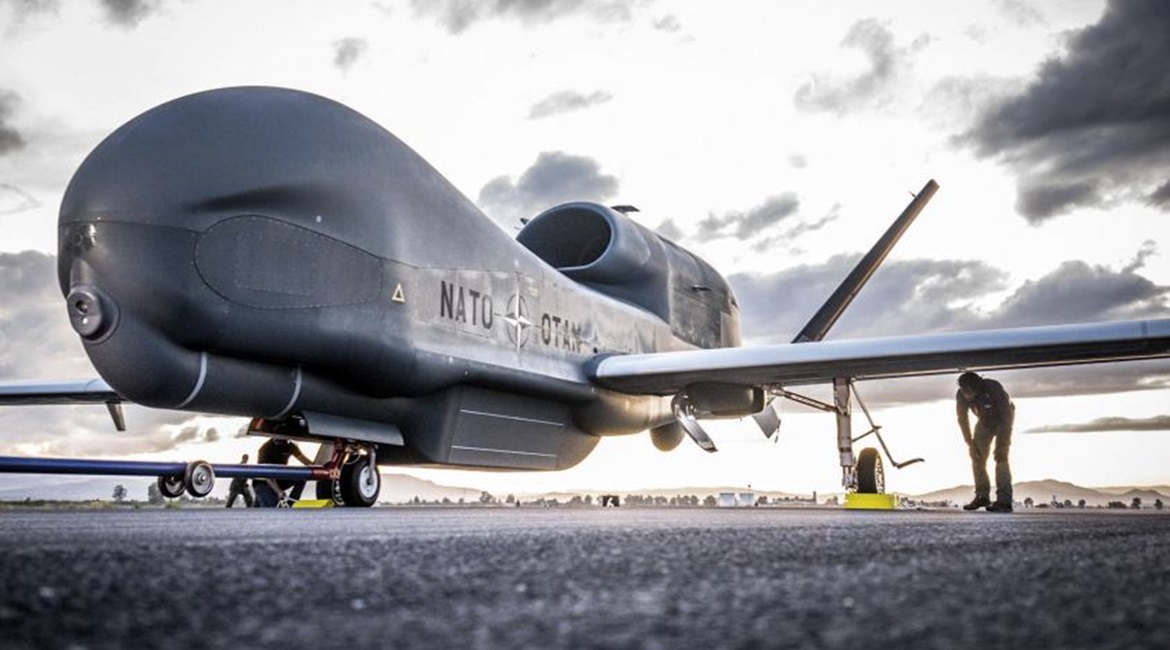
The United Kingdom has begun discussions with NATO on increasing the UK Royal Air Force’s (RAF’s) contribution to Alliance Ground Surveillance (AGS) and its five RQ-4D Phoenix unmanned aerial vehicles (UAVs) based in Sigonella, Sicily.

NATO declared the initial operational capability of AGS in February. (NATO)
The move aims to fill wide area surveillance capability gaps following the retirement in March of the RAF’s five Sentinel R1 airborne stand-off radar (ASTOR) surveillance aircraft, the UK’s contribution in kind to AGS.
NATO spokesperson Oana Lungescu told Janes on 19 April, “NATO’s fleet of AGS surveillance aircraft was declared mission-ready by the alliance’s top commander in February. Following the Sentinel’s last operational flight earlier this year, we are in discussions with the UK government on how to adjust the UK’s contribution to the alliance’s AGS programme. As the Secretary General [Jens Stoltenberg] told Prime Minister [Boris] Johnson in March, the UK has a leading role in NATO. We welcome that the UK continues to field high-tech capabilities including Poseidon maritime patrol aircraft and Rivet Joint surveillance aircraft which make important contributions to our shared security.”
Senior UK defence sources told Janes on 19 April that it was likely that RAF image analysts, mission planning staff, UAV pilots, and maintenance personnel would be assigned to Sigonella to work alongside their NATO colleagues. The UK could also make a financial contribution to the running costs of the RQ-4Ds. By contributing to the costs of AGS, the UK would gain influence over operational tasking, technology enhancements, and allow the RQ-4Ds to support UK training exercises. This would be subject to ratification by NATO partners and the UK government.
A senior RAF source told Janes
Looking to read the full article?
Gain unlimited access to Janes news and more...






